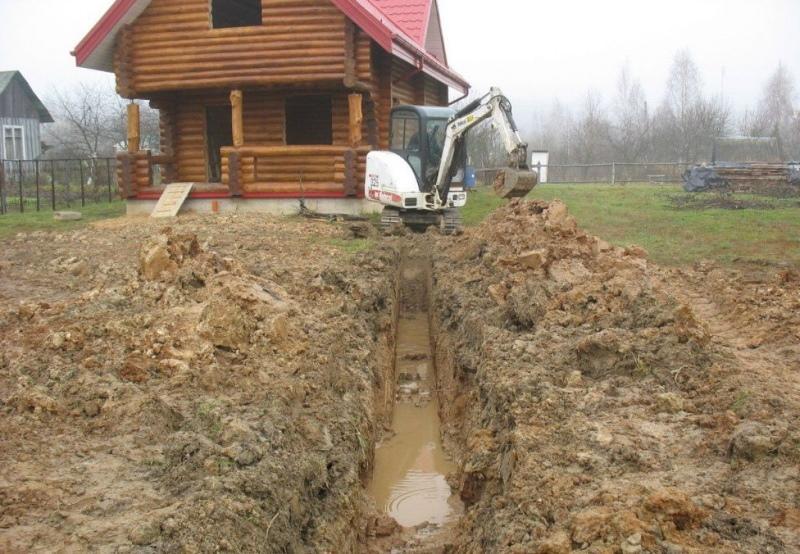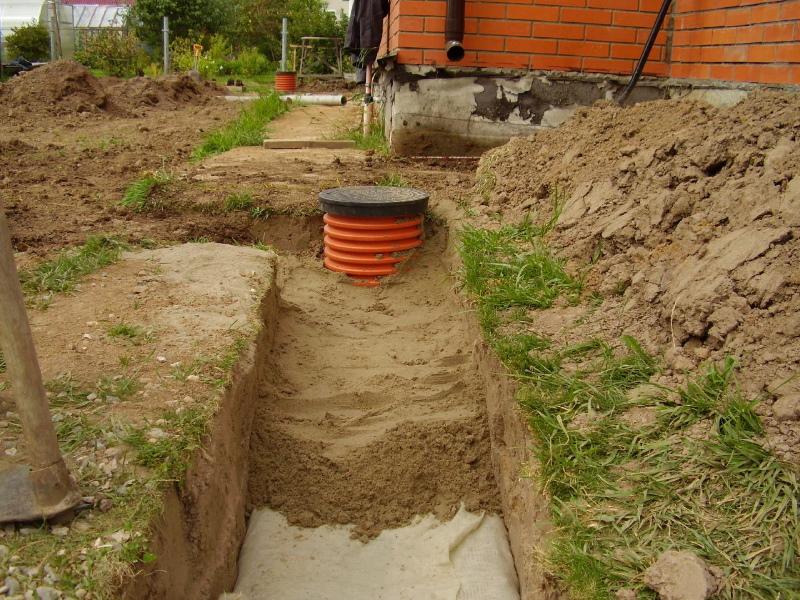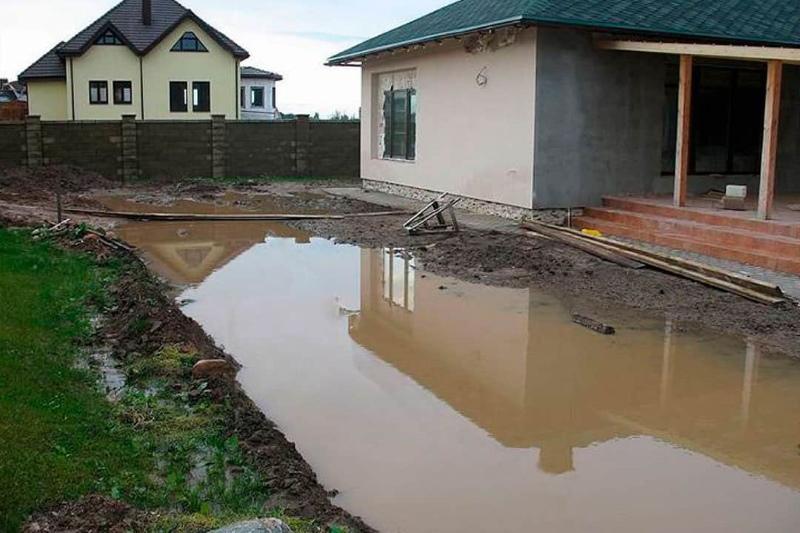Note to summer residents and not only - drainage of a site with a high level of groundwater
 A high level of groundwater is not only a great opportunity to acquire your own well. And also - constantly damp walls, fungus in the premises, cracks in the foundation. It is in order to avoid such phenomena in problem areas that drainage of a site with a high groundwater level (GWL) is done.
A high level of groundwater is not only a great opportunity to acquire your own well. And also - constantly damp walls, fungus in the premises, cracks in the foundation. It is in order to avoid such phenomena in problem areas that drainage of a site with a high groundwater level (GWL) is done.
The closer the water is to the surface of the soil, the more troubles it can do. On flat terrain, rain puddles and melted snow accumulate, because they have nowhere to go, because the soil is already saturated with moisture. The lowlands, on the contrary, flood after each rain, and in areas with a slope, the fertile soil layer is washed away. The drainage system will help remove excess water from the site, both from the surface and from the depths, and not only.
Why do you need drainage on the site

- destruction of walls and foundations as a result of soil displacement after showers, and especially if then frost hit and the soil swells;
- moisture seepage through the walls inside the house and to its underground parts and the appearance of mold and mildew;
- waterlogging of the soil and the death of cultural plantings;
- soil erosion and leaching of chernozem.
How to determine a high GWL
 Surveyors will provide the most accurate information on the need for drainage and the level of groundwater. They have special equipment, but this requires material costs.
Surveyors will provide the most accurate information on the need for drainage and the level of groundwater. They have special equipment, but this requires material costs.
Simple observations can confirm that there is indeed water on the site in dangerous proximity to the surface, namely:
- Increased level of humidity in rooms, especially in basements.
- Stable water level in the well, which does not drop even during the dry season.
- Plants growing, especially those continuing their development in drought, are: horse sorrel, nettle, cattail, hemlock.
- Puddles stagnant for a long time after rain.
Drainage is also necessary on clay soil, because water seeps through it for a long time and does not leave.
Do-it-yourself drainage of a site with a high groundwater level - highlights
 The most effective will be the implementation of deep drainage. To do this, in places from which it is necessary to drain water or lower the GWL, a system of drainage pipes is laid, diverging in the form of a Christmas tree. The pipes must slope and converge at a place that collects water - manifold or a well. If there are no more residential buildings nearby, but there is a river, you can bring water there, and it will serve as a collector.
The most effective will be the implementation of deep drainage. To do this, in places from which it is necessary to drain water or lower the GWL, a system of drainage pipes is laid, diverging in the form of a Christmas tree. The pipes must slope and converge at a place that collects water - manifold or a well. If there are no more residential buildings nearby, but there is a river, you can bring water there, and it will serve as a collector.
In addition, at each site, even if everything is fine with the GWL there, there should be surface drainage. It will drain water from the house, garden paths, car wash after rain.
Surface drainage can be of two types:
- Point. Storm water inlets are installed near the taps, under the roof gutters. They will collect water after rain, melting snow or abundant watering of plants.

- Linear.It is erected along the perimeter of the site or in its problem areas, having previously prepared a concrete base. It consists of sloped trays and channels with sand traps and protective grids.

Linear and point drains are usually a single system. It is quite enough if the GWL is located deep. If the waters come close to the surface, deep drainage is needed. Better yet, it can be combined with a surface drainage system.